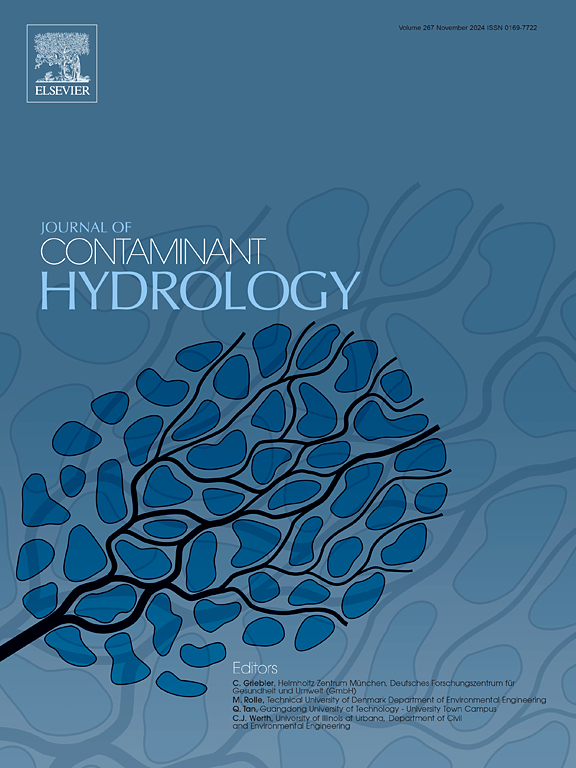Spatio-temporal characteristics and influencing factors of water quality in Xiangxi Bay under the operation of the three gorges reservoir
IF 3.5
3区 环境科学与生态学
Q2 ENVIRONMENTAL SCIENCES
引用次数: 0
Abstract
As the largest hydropower project in the world, the Three Gorges Reservoir (TGR) exerts significant backwater effects, leading to various water quality issues. The Xiangxi River, the largest tributary near the dam, has experienced algal bloom phenomena for several years. However, the characteristics and influencing factors of water quality during different operational periods of the reservoir remain unclear. This study analyzes 12 physical and chemical parameters of the Xiangxi Bay (XXB) from 2019 to 2023, employing a data-driven approach to explore the temporal and spatial characteristics of water quality under varying operational conditions of the TGR. It discusses the influencing factors and proposes countermeasures to address water quality challenges. The results indicate that: (1) Water quality parameters in XXB exhibit significant spatial and temporal variability, peaking in summer, with higher values observed in the middle and upper reaches. The Water Quality Index (WQI) indicates overall good water quality, while the Trophic Level Index (TLI) suggests medium eutrophication, particularly evident in spring and summer. (2) The backwater effects of the TGR have altered hydrodynamic conditions and mixing processes in XXB, significantly impacting water quality and promoting eutrophication. (3) Water quality is influenced by nutrient, organic matter, algae, and temperature, especially during low water levels in summer, with the middle and upper reaches being most affected. Key factors driving algal growth during this period include Total Nitrogen (TN), Transparency (SD), and Water Temperature (WT). (4) Effective control of eutrophication and algal blooms in XXB should focus on long-term upstream source management, close monitoring and prediction during spring and summer, and ecological operation of reservoir. This study enhances our understanding of the temporal and spatial characteristics of water quality in XXB under the operational dynamics of the TGR, providing guidance for eutrophication management and bloom prevention.
三峡水库运行下香溪湾水质时空特征及影响因素
作为世界上最大的水电工程,三峡水库(TGR)产生了显著的回水效应,导致各种水质问题。大坝附近最大的支流香溪河已连续多年出现藻华现象。然而,水库不同运行期的水质特征和影响因素仍不清楚。本研究采用数据驱动的方法,分析了 2019 年至 2023 年湘西湾(XXB)的 12 项理化参数,探讨了水库不同运行期水质的时空特征。研究探讨了影响因素,并提出了应对水质挑战的对策建议。结果表明(1) XXB 的水质参数表现出显著的时空变异性,夏季达到峰值,中上游水质参数值较高。水质指数(WQI)表明水质总体良好,而营养级指数(TLI)表明富营养化程度为中等,在春季和夏季尤为明显。(2)TGR 的回水效应改变了 XXB 的水动力条件和混合过程,严重影响了水质并促进了富营养化。(3) 水质受到营养物、有机物、藻类和温度的影响,尤其是在夏季水位较低时,中上游受到的影响最大。这一时期藻类生长的关键因素包括总氮(TN)、透明度(SD)和水温(WT)。(4) 有效控制 XXB 水库富营养化和藻华应从上游源头的长期治理、春夏季的严密监测预报和水库的生态运行等方面入手。本研究加深了我们对 TGR 运行动态下 XXB 水质时空特征的理解,为富营养化管理和藻华防治提供了指导。
本文章由计算机程序翻译,如有差异,请以英文原文为准。
求助全文
约1分钟内获得全文
求助全文
来源期刊

Journal of contaminant hydrology
环境科学-地球科学综合
CiteScore
6.80
自引率
2.80%
发文量
129
审稿时长
68 days
期刊介绍:
The Journal of Contaminant Hydrology is an international journal publishing scientific articles pertaining to the contamination of subsurface water resources. Emphasis is placed on investigations of the physical, chemical, and biological processes influencing the behavior and fate of organic and inorganic contaminants in the unsaturated (vadose) and saturated (groundwater) zones, as well as at groundwater-surface water interfaces. The ecological impacts of contaminants transported both from and to aquifers are of interest. Articles on contamination of surface water only, without a link to groundwater, are out of the scope. Broad latitude is allowed in identifying contaminants of interest, and include legacy and emerging pollutants, nutrients, nanoparticles, pathogenic microorganisms (e.g., bacteria, viruses, protozoa), microplastics, and various constituents associated with energy production (e.g., methane, carbon dioxide, hydrogen sulfide).
The journal''s scope embraces a wide range of topics including: experimental investigations of contaminant sorption, diffusion, transformation, volatilization and transport in the surface and subsurface; characterization of soil and aquifer properties only as they influence contaminant behavior; development and testing of mathematical models of contaminant behaviour; innovative techniques for restoration of contaminated sites; development of new tools or techniques for monitoring the extent of soil and groundwater contamination; transformation of contaminants in the hyporheic zone; effects of contaminants traversing the hyporheic zone on surface water and groundwater ecosystems; subsurface carbon sequestration and/or turnover; and migration of fluids associated with energy production into groundwater.
 求助内容:
求助内容: 应助结果提醒方式:
应助结果提醒方式:


